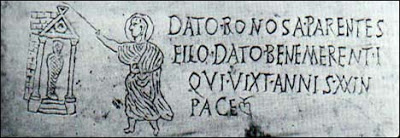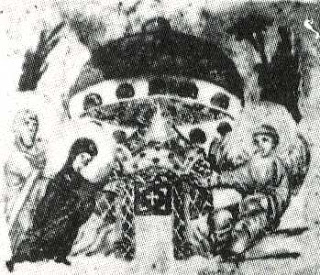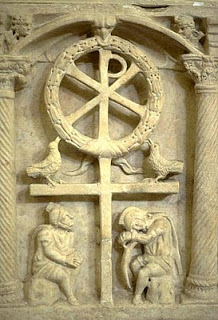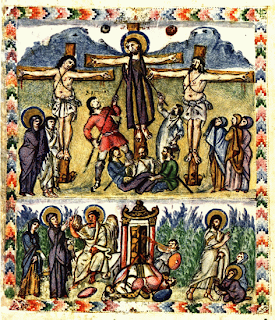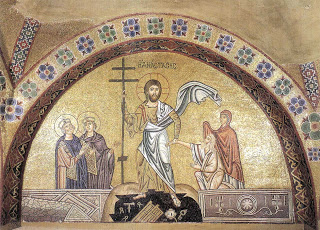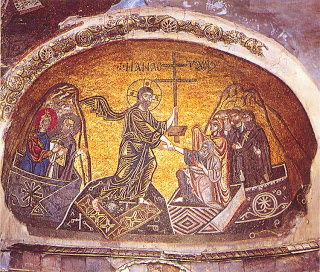I recently finished writing my thesis, titled The Resurrection in Art and Liturgy. This thesis and the resulting project arose as a result of my reflection upon the chapter on “Art and Liturgy” in Cardinal Ratzinger’s book The Spirit of the Liturgy. Specifically, it is first a response to a statement that our Holy Father makes: “All sacred images are, without exception, in a certain sense images of the Resurrection, history read in light of the Resurrection.” Later, after a discussion of the theology of the icon he asks, “Is this theology of the icon, as developed in the East, true? Is it valid for us?”
In order to respond, I investigated the development of early Christian art, when the Church was still unified, and studied the connections to theological and cultural developments. I researched the history of the icon in order to understand its context in the Eastern Church. From this arose the idea to combine the Orthodox and the Catholic traditions in one painting of the Resurrection, an image that could be a part of the liturgy in the same way an icon is, but one that uses the traditions and language of beauty developed by the Western masters of the past 1000 years.
Early Christian faith was anchored in Christ’s Resurrection. The actual episode of Christ’s Resurrection is not narrated in the Gospels, and for this reason we do not see it illustrated until much later in Christian art. Jesus raising Lazarus is the most frequent image in the catacombs that, along with the story of Jonah, refer to the Resurrection come alive.
The earliest Christian artists shared their hope and faith through illustration of scripture. The Sarcophagus of Domatilla of the 5th Century uses the Chi-ro symbol above the cross to illustrate the Resurrection and Crucifixion as one event.
The Rabbula Gospel of 586 is unique in that it depicts both the Crucifixion and the Resurrection, the oldest treatment in Christian iconography.
Depictions of the Resurrection of Christ came to be represented by the descent of the Saviour into Hades. Called the Anastasis or Harrowing of Hell, it is based on I Peter 3:18-20 and the Apostles’ Creed which states that Christ “descended into Hell” before his Resurrection. For the early Church this came to be the icon of the Resurrection and continues to be so for the Orthodox Church today.
Thus, Holy Tradition has shown us that the quintessential icon of the resurrection was the Descent into Hades where Christ with His soul and divinity went down to Hades and shattered the gates, freeing the souls of those awaiting him. This icon then does not represent an historical event but rather the dogma of the abolition of Hades and death and the resurrection of all humanity.
By the 11th Century, the composition for the Descent into Hades is set:
This iconographic type represents the Lord in Hades surrounded by a radiant glory; He is trampling upon the demolished gates of Hell and bears in His left hand the Cross of Resurrection, while with His right hand He raises from sarcophagus Adam, who represents the human race.
Fine examples of the Descent into Hades from this time are found in the monasteries of Hosios Loukas ,Phocis, Nea Mony and Daphni all in Greece, and the churches of San Marco in Venice.

